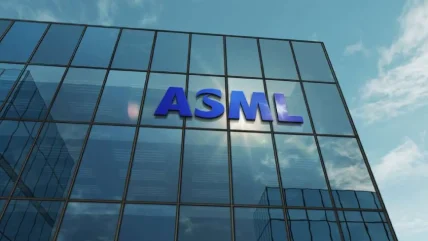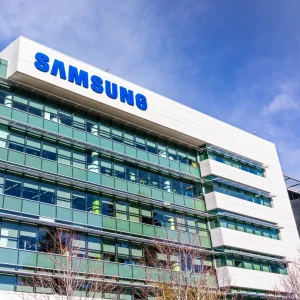
ASML and Belgian research firm imec have opened a test laboratory for the former’s high numerical aperture extreme ultraviolet (High NA EUV) lithography equipment. The new facility in Veldhoven in the Netherlands will allow companies further down the chip supply chain to experiment with technology designed to make the most advanced semiconductors in the world. High NA is hoped to afford new users 60% better resolution for their chips compared to those manufactured using ASML’s current EUV technology.
“The opening of the joint ASML-imec High NA EUV Lab represents a milestone in preparing High NA EUV for high-volume manufacturing – anticipated to happen in the 2025–2026 timeframe,” said ASML in a statement earlier today. “By giving leading-edge logic and memory chip manufacturers access to the High NA EUV prototype scanner and surrounding tools (which include a coat and development track, metrology tools, wafer and mask handling systems), imec and ASML support them in de-risking the technology and develop private High NA EUV use cases before the scanners will be operational in their production fabs.”
ASML and Intel betting big on High NA lithography
High NA lithography refers to a highly complex and expensive process wherein light is used to print circuit patterns on silicon wafers. Originally pioneered in the 1950s, the technique has since been painstakingly perfected using lasers, different wavelengths of light and billions of dollars of research funding.
ASML is currently the main global supplier of high-end lithography equipment, which the firm supplies to TSMC, Intel, Samsung and SK Hynix. So far, only Intel has been granted access to a High NA scanner, after its chief executive Pat Gelsinger pursued first-mover rights to the then-theoretical technology in 2021. The decision was made after Intel initially rejected an offer to obtain the same rights to the current generation of EUV scanners – a decision that some industry experts have said forced Intel to cede market share to rivals TSMC and Samsung.
Intel has since installed its first High NA scanner at its fab in Hillsboro, Oregon. While ASML claims to have received several orders for the machine, at least one major chipmaker has proven less enthusiastic about the new system. While TSMC senior vice-president Kevin Zhang said in May that while he approved of High-NA EUV’s capabilities, the cost of the machines – $350m per unit – “is very high.” Furthermore, he said, it probably wasn’t required to produce the firm’s new A16 node technology. “I think at this point,” said Zhang, “our existing EUV capability should be able to support that.”
Jury out on new system
The markets, too, have yet to be impressed by High NA. In April, ASML reported that it sold 70 EUV units during this year’s first quarter compared to 124 at the end of 2023. Things would pick up for ASML later in the year said its CFO Roger Dassen. “The secular trends are really strong, if you look at AI, if you look at electrification, if you look at the energy transition,” said Dassen. “It’s all very strong, positive momentum.”
Meanwhile, ASML continues to be pressured to cease business activities in mainland China. While the Dutch manufacturer has said it will not supply High NA equipment to the People’s Republic, it continues to service less advanced equipment throughout the country. In April, Reuters reported that the US government planned to pressure ASML to stop these activities after imposing new restrictions on companies exporting AI chips to China.
Analysts remain divided on China’s potential to eventually obtain technology like High NA EUV. “I think it’s inevitable that China catches up to the current status quo at some point,” chip historian Chris Miller told The Vergelast year. “Whether that’s in 2027 or 2035, I don’t know.”






